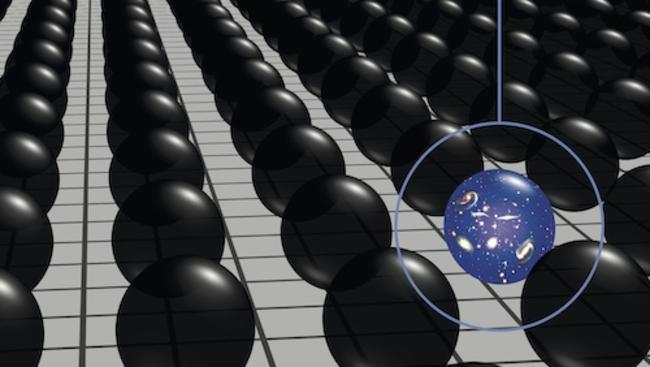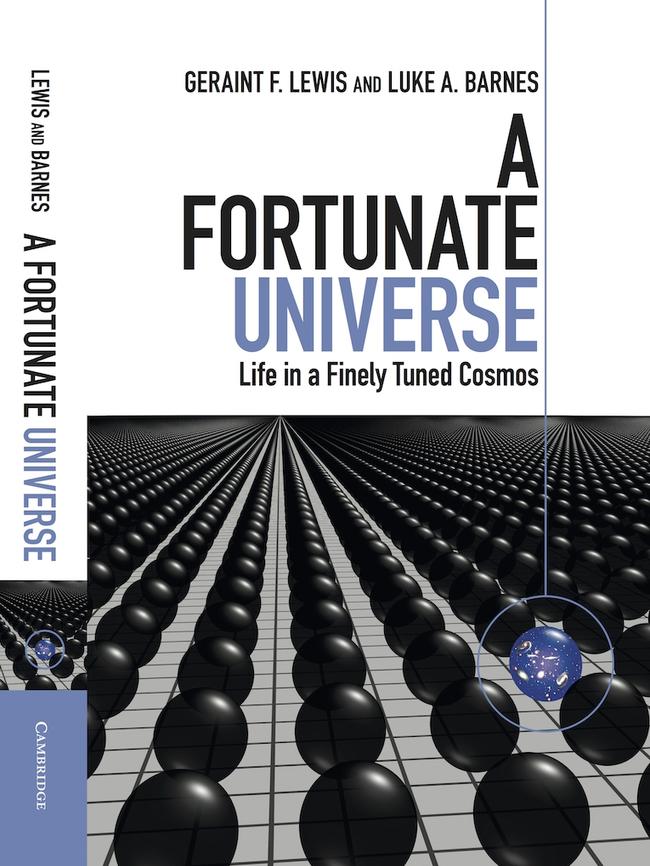Geraint Lewis and Luke Barnes leave us a little less lost in space
Geraint Lewis and Luke Barnes lead us through the cosmos with a light hand, streak of humour and lack of pedantry.

In Candide, Voltaire satirises Gottfried Wilhelm Leibniz’s dictum that we live in the best of all possible worlds. The naive Dr Pangloss clings to this as an essential truth, despite enduring a chain of terrible mishaps. By the end of Candide, it is hard to agree with the good doctor.
Australian astrophysicists Geraint Lewis and Luke Barnes open their charming, intelligent and well-written book by arguing that we live in “a fortunate universe”. The Earth “is a special place” for humans, “a relative cosmic paradise where the conditions are just right for life”.
Not only that, but “at every level, we find that our universe’s ability to create and sustain life forms is rare and remarkable”. The University of Sydney duo then proceed to convincingly show why we should share their belief.

This requires a gentle stroll through the details of the standard model of particle physics, as well as the standard model of cosmology, but the authors lead us with such a light hand, streak of humour and lack of pedantry that the information is easily absorbed.
Atomic nuclei are made up of neutrons and protons, and these in turn are composed of quarks. But what determines the mass of the quarks and electrons that surround the nuclei? Or, for that matter, what sets the strength of the forces that hold the quarks together or of those that bind the electrons to the nuclei? Despite decades of valiant research, we still don’t know.
A more technical statement of our puzzlement is that the standard model of particle physics has 19 so-called free parameters, numbers whose values have been determined experimentally but have evaded explanation.
But those parameters are not free in the sense that the world would be relatively unchanged if they had slightly different values. Here’s where the subtitle Life in a Finely Tuned Cosmos enters the picture.
Lewis and Barnes show us how small changes lead to a variety of disasters. (“Ruining a universe is easy,” Barnes quips.) Neutrons and protons are primarily composed of up and down quarks. A little shift in the masses of those quarks causes protons to decay into neutrons rather than vice versa. In another version, the shifts produce a universe where hydrogen and helium are the only elements present.
After an introduction to the concept of finetuning in particle physics, Lewis and Barnes turn to cosmology and come face-to-face with the great dilemmas posed in understanding how our universe has come about and what its future is likely to be. The establishment of the standard model of cosmology is regarded as one of the great triumphs of modern science.
According to the model, the universe began with a big bang a little less than 14 billion years ago and has been expanding since then. Atoms formed about 400,000 years after the big bang, and, as expansion and cooling continued, stars, galaxies and planets formed.
Is this all a happy coincidence, as the authors ask each other in an amusing mock debate modelled on one that Galileo instigated 400 years earlier, or is there some deeper reason? Some scientists have taken to espousing what has been called the anthropic principle. It is formulated in a variety of ways that border on the tautological, but the essential idea is that since we exist, the universe must be such as to allow the presence of observers such as us.
Is there an underlying truth to be discovered, or must we be satisfied with accepting such a principle? Many physicists had hoped string theory or some alternative unification of gravity with quantum theory might provide explanations for the present state of the standard models, but so far they haven’t. Indeed, such theories have led to contemplation of the possibility that our universe is only one of an essentially infinite number of universes being continually formed and destroyed — a multiverse. Is this the last step in humans’ transition from centrality in the universe to marginality, or the first step in a revelation grander than we can imagine?
All this brings us back, as Lewis and Barnes demonstrate, to the question of finetuning and in particular to its most glaring example, one discovered only a few years ago. It had been assumed that even if we remained ignorant of some details of the universe’s expansion, at least we could state with confidence what its composition was. We were wrong.
The universe’s known parts constitute 5 per cent of its contents, while 26 per cent is made of an unknown material we call dark matter. The remaining 69 per cent is dark energy, which exerts a gravitationally repulsive force that helps accelerate the universe’s expansion.
The favoured explanation for dark energy is a seemingly small but highly significant modification of that pillar of 20th-century science, Albert Einstein’s theory of general relativity.
The theory allows for an additional contribution to the energy and momentum of known matter in the form of a mathematical constant, but how big or small should this “cosmological constant” be? Einstein considered including the constant in his equation, to explain why the universe was apparently static. When he learned of the experimental detection of the universe’s expansion, he did away with it, delighted to see his theory restored to pristine simplicity.
That is where matters stood until the recent discovery the universe was not only expanding but doing so at an accelerating rate, a fact that seemingly called for a cosmological constant. Quantum theory suggests one could be present, but since the theory predicted one with an unimaginably large magnitude, the common belief was that some unknown symmetry principle made the quantum contribution to the cosmological constant equal to zero. But it apparently is not zero, leaving us now with the greatest of all finetuning problems.
Where does science go from here? Does what has been popularly called a theory of everything exist? Is there a multiverse? Must we be satisfied with an anthropic principle? The authors discuss these questions and more in a final dialogue. As Barnes concludes: “Irrespective of how many other dead and sterile universes are out there, in this one I have a pair of kids that need a bath.” Life goes on.
Gino Serge is emeritus professor of physics at the University of Pennsylvania.
THE WALL STREET JOURNAL
A Fortunate Universe: Life in a Finely Tuned Cosmos
By Geraint F. Lewis and Luke Barnes
University of Cambridge Press, 288pp,
$27.99 (HB)


